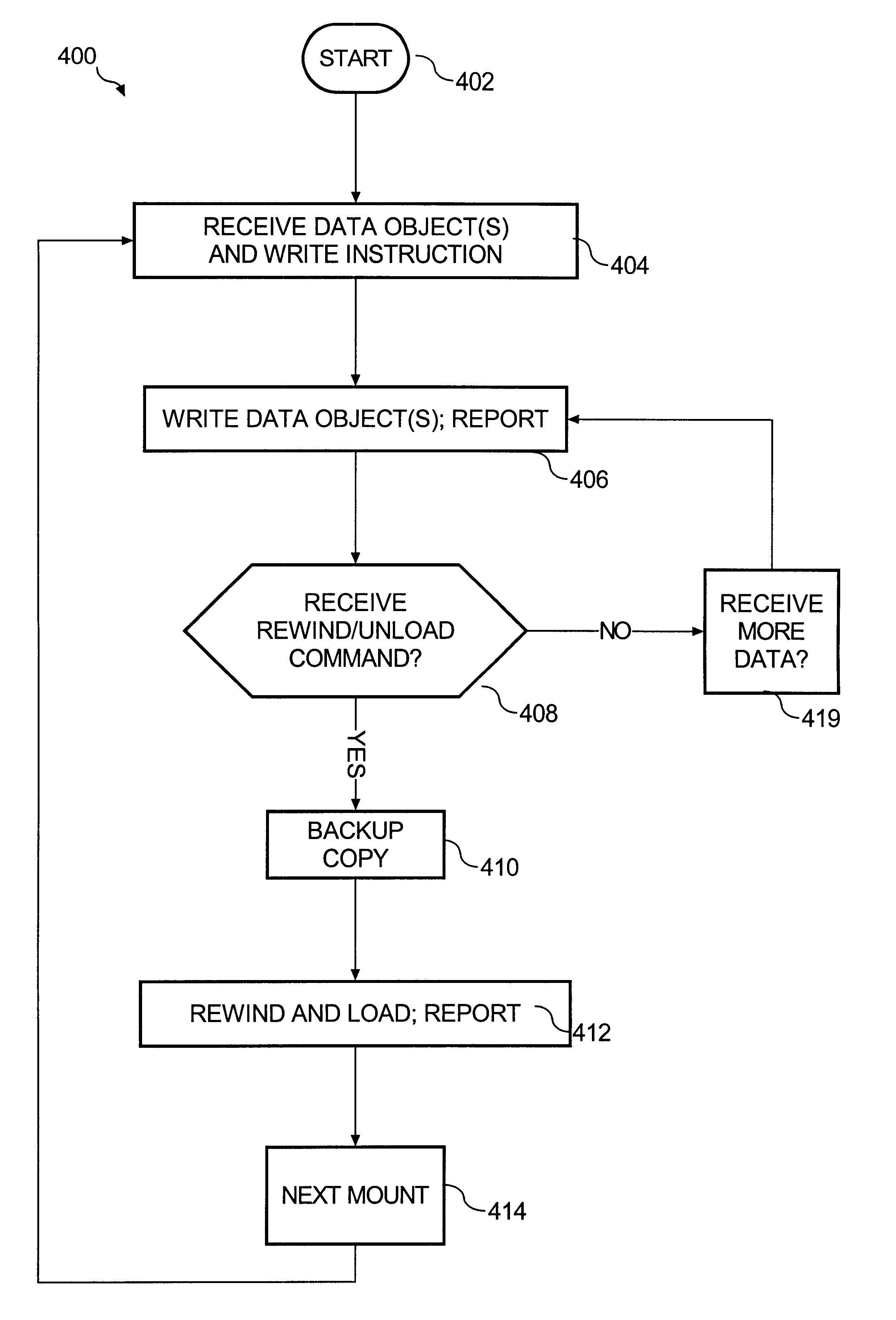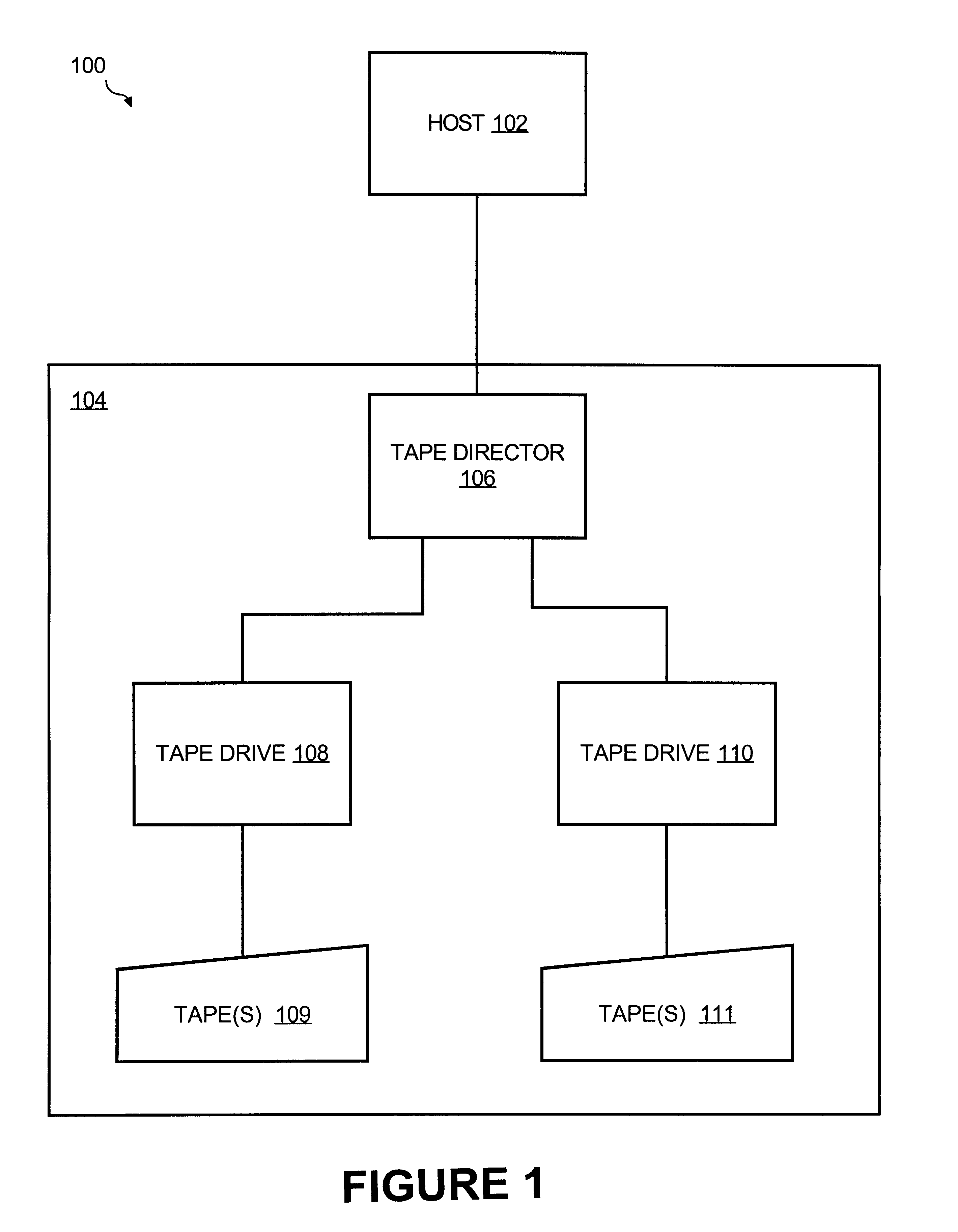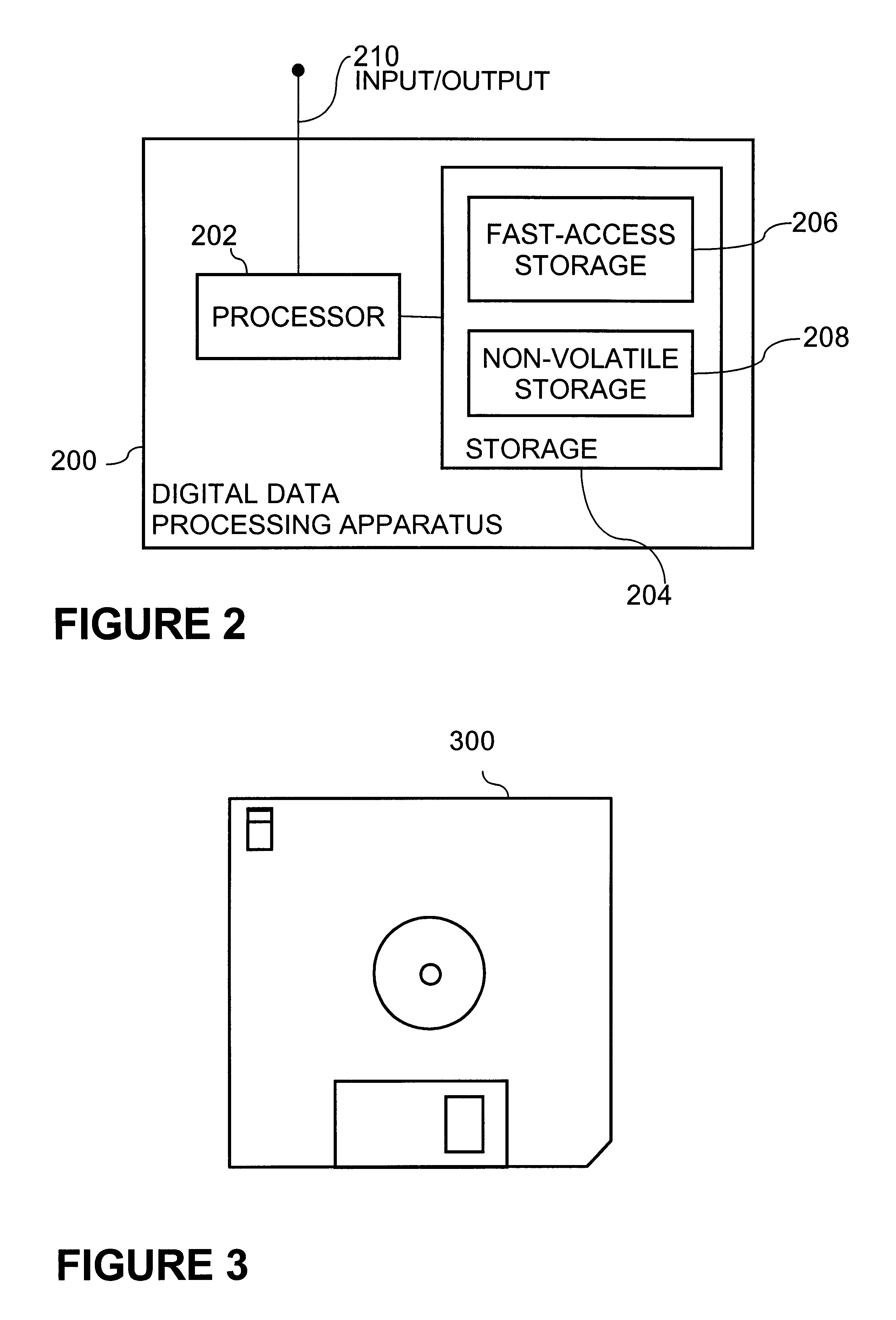Backup copy achieving improved efficiency by waiting until rewind/unload command for bulk data copy
a technology of bulk data and rewind/unload command, applied in the direction of input/output to record carrier, redundant hardware error correction, instruments, etc., can solve the problems of data loss catastrophic, data loss, and double the number of required dasds
- Summary
- Abstract
- Description
- Claims
- Application Information
AI Technical Summary
Problems solved by technology
Method used
Image
Examples
Embodiment Construction
To more thoroughly explain the operation of this invention, a specific comparative example is provided below in the context of "dual tape" storage. This example is given to compare a conventional tape backup with the backup of this invention. In this example, the tape system receives two data objects of 2400 Mb size, and an accompanying write instruction. While storing data, the tape drives inherently apply 3:1 compression. Thus, when each 2400 Mb data object is stored on tape, it occupies 800 Mb. Each tape drive stores data at the rate of 10 Mb / second.
Conventional Backup
The conventional backup sequence is diagrammatically shown by FIGS. 5A-5B. In FIG. 5A, the tape director 502 directs the tape drive 504 to store the first data object to a tape 508, and the tape drive 506 to store the second data object to its tape 510. The tape drives can operate in parallel, so this operation takes 240 seconds (i.e., 2400 Mb data object written at 10 Mb / second).
Next, in FIG. 5B, the tape director ...
PUM
 Login to View More
Login to View More Abstract
Description
Claims
Application Information
 Login to View More
Login to View More - R&D
- Intellectual Property
- Life Sciences
- Materials
- Tech Scout
- Unparalleled Data Quality
- Higher Quality Content
- 60% Fewer Hallucinations
Browse by: Latest US Patents, China's latest patents, Technical Efficacy Thesaurus, Application Domain, Technology Topic, Popular Technical Reports.
© 2025 PatSnap. All rights reserved.Legal|Privacy policy|Modern Slavery Act Transparency Statement|Sitemap|About US| Contact US: help@patsnap.com



